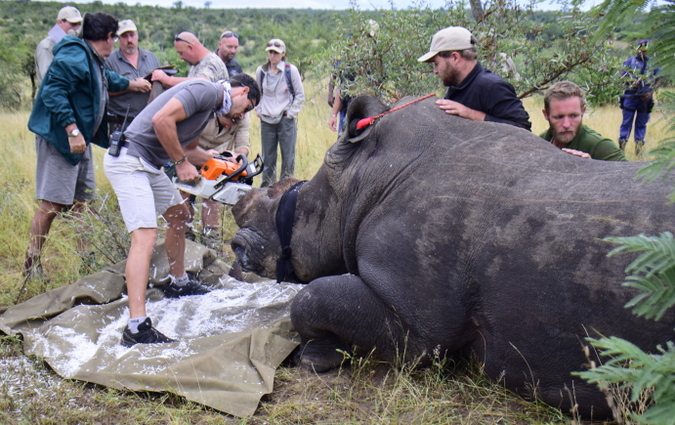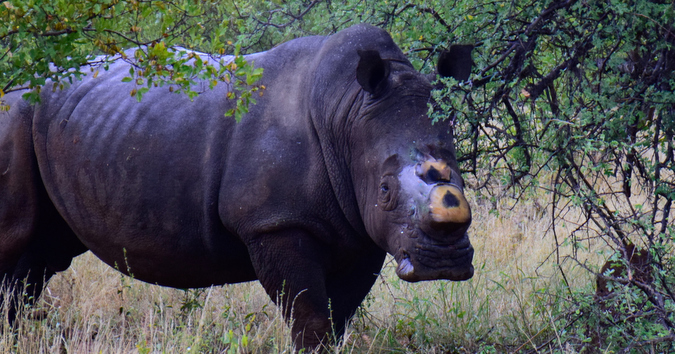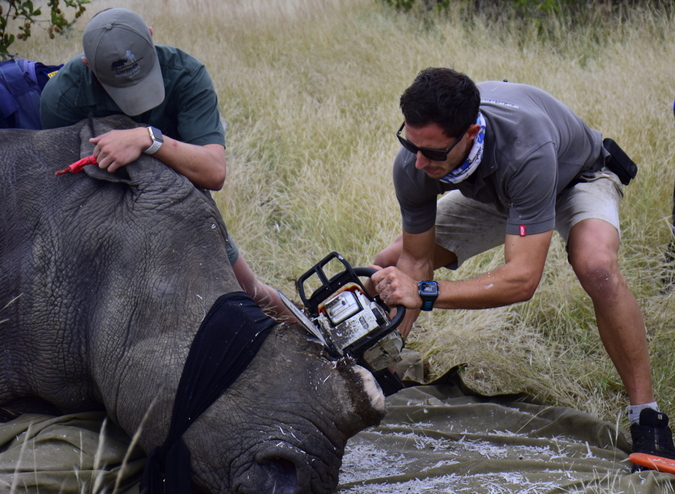
Press release from Balule Nature Reserve
South African National Parks (SANParks) and its conservation partners in the Greater Kruger region are in the process of implementing additional strategic and collaborative management interventions as part of an integrated rhino management approach. As part of several initiatives, some entities will embark on the strategic dehorning of rhinos in the Greater Kruger Protected Area landscape, and Balule Private Nature Reserve were able to execute dehorning during the last week.
In a seven day, highly specialised operation, the rhino population of Balule has been dehorned.
The operation was carried out with professional precision and in conjunction with our neighbouring reserve. It is believed to have been the largest single dehorning operation yet carried out in the Mpumalanga and Limpopo Lowveld focusing on free-ranging wild rhinos.

Balule is a Private Reserve, open to the Kruger National Park and its neighbours in the Association of Private Nature Reserves (APNR). It is privately funded and has been hit hard by illegal poaching in the past several years.
The relentless onslaught has reduced the rhino population within Balule by nearly 70% since 2012.
Family groups have been severely compromised and sex ratios skewed leading to a dire situation for the natural prosperity of our rhinos.

Accordingly, in order to stem the losses it was resolved to:
• Explore, and if possible implement, a dehorning strategy so as to reduce the attractiveness of the targets to poaching syndicates; and
• Implement additional security measures.
Following ten months of planning and extensive stakeholder consultations, which included South African National Parks specialists from the Kruger National Park, neighbouring reserves and provincial authorities, the appropriate permits authorising Balule to proceed with the operation were issued.
This multi-disciplined operation was carried out by a large specialised team comprising the Balule management team, four wildlife veterinarians, a fixed-wing spotter aeroplane and two helicopters. In addition, vehicle-based ground teams with air-to-ground communications, systematically moved through the reserve capturing and dehorning all rhinos that were located.
The entire operation was closely monitored by a LEDET official who was furthermore responsible for the collection of DNA samples from every rhino, which will be entered into the RHODIS system which is hosted at the University of Pretoria, Onderstepoort genetics laboratory.

Balule is host to a black rhino population which belongs to the Eastern Cape Parks and Tourism Agency. These rhinos were successfully released in Balule in 2011 as part of the WWF Black Rhino Expansion Program (BREP program).
ECPTA approved this security intervention and their officials were present during the dehorning of their black rhinos in Balule. Valuable data and genetic samples were collected during the dehorning immobilisation of the rhinos.
During the operation increased security measures were in place and a specialised third-party asset protection security organisation were present. All horns were removed from the reserve daily and placed into secure off-site storage facilities.

Balule approved this extensive operation, as it had become abundantly clear that with the current intensity of rhino poaching, the Balule rhino would become extinct within the next two to four years, unless more drastic measures were taken. This, in spite of the already substantial financial investments into security, both in terms of manpower and technology which has been spent over the past few years.
The dehorning project is not viewed as a standalone initiative, but will contribute towards the existing multi-faceted suite of security initiatives which already exist within the APNR and Balule. Furthermore, the Balule dehorning project is contributory towards the GLTFCA integrated rhino management program, which is underpinned by the cooperative agreement which exists between Balule, other Protected Areas open to the KNP and the KNP.
Given the pioneering nature of this project, the effectiveness against poaching as well as the health and well-being of the rhinos will be closely and scientifically monitored into the future, with the ultimate objective of ensuring the survival of the wild rhino population within Protected Areas, the Country and in Africa.

To comment on this story: Login (or sign up) to our app here - it's a troll-free safe place 🙂.![]()






